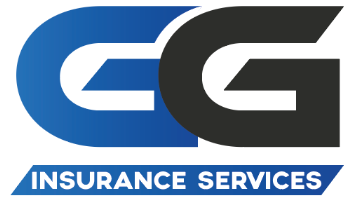Is a dark cloud of uncertainty looming over your transaction?
Navigating a merger or acquisition is akin to crossing treacherous waters, where hidden risks are the perilous reefs.
Purchasing Mergers & Acquisitions Insurance serves as the vessel’s robust hull, shielding against unexpected fiscal breaches that can emerge from inaccuracies in the representations and warranties offered.
Understanding M&A Insurance Landscape
In the complex tapestry of M&A transactions, various insurance products interlace to mitigate contingent liabilities. Amongst these, Transaction Liability Insurance stands as a bulwark, guarding against financial uncertainties that may ensue post-deal closure. It is tailored to address potential breaches in transaction agreements, ensuring a smoother transition of ownership and operational command.
Warranty & Indemnity Insurance, a subset of Transaction Liability Insurance, particularly empowers buyers and sellers by solidifying trust in contractual assurances. This insurance form crystallizes confidence, providing a financial safety net for the veracity of statements made during the transaction.
The Role of Insurance in Deal-Making
In the intricate world of mergers and acquisitions, insurance is not merely a safety net—it’s a strategic tool. It enhances deal stability and buyer confidence, thereby potentially increasing the valuation of the target company.
Insurers assess, quantify, and assume risks in a transaction, acting as neutral third-parties. With products like Representation & Warranties Insurance, they facilitate smoother negotiations and help seal deals with fewer contingencies or seller concessions.
Insurance can turn deal-breakers into deal-makers by mitigating unforeseen risks.
Relying on insurance such as Warranty & Indemnity Insurance reshapes the risk landscape. It allows for greater protection of the deal parties’ interests post-closing (should indemnity claims arise), enabling a transfer of liability away from the balance sheets and fostering a cleaner exit for sellers.
Types of M&A Insurance Products
Mergers and Acquisitions (M&A) Insurance products mitigate risks associated with transactions, providing essential protection for both buyers and sellers.
- Representations & Warranties Insurance: Shields against inaccuracies in the seller’s assertions about the company.
- Warranty & Indemnity Insurance: Offers cover for breaches of warranty and indemnity claims post-deal.
- Transaction Liability Insurance: Addresses specific liabilities identified during due diligence.
- Contingency Insurance: Protects against uncertain future liabilities or losses that may surface post-closing.
These insurances can play a pivotal role in closing a deal and ensuring a smoother transition post-acquisition.
From bolstering a seller’s position to assuaging the buyer’s concerns, these products have become staple tools in the M&A toolkit.
Evaluating Risks in Mergers & Acquisitions
When contemplating an M&A transaction, a comprehensive risk assessment is paramount. Buyers must scrutinize due diligence reports, validate the target’s representations, and evaluate potential post-closing liabilities. The confluence of operational, financial, and legal risks necessitates astute analysis, often with the support of specialized advisors, to ensure the accurate valuation and seamless integration of acquired assets.
Given the complexity of these deals, M&A Insurance proves invaluable in protecting stakeholders from unanticipated exposures. Transecting the labyrinth of potential liabilities requires a forward-thinking strategy wherein insurance solutions such as Warranty & Indemnity or Representations & Warranties Insurance become critical safety nets, mitigating the financial impact of indemnification claims and other contingencies.
Identifying Common Transaction Pitfalls
Inadequate due diligence is a primary concern, often leading to overlooked liabilities, cultural mismatches, or inaccurate valuations that can derail a deal post-closure.
Material misrepresentations may lurk within the mass of transaction documentation, posing a hidden threat to both parties.
Unidentified regulatory issues or compliance failures can emerge, triggering costly penalties and jeopardizing the transaction’s long-term success.
Tax exposures are another blind spot that, if not caught in time, can significantly burden the acquired entity and, by extension, the acquirer.
Operational weaknesses, such as insufficient cybersecurity measures, might be underestimated—or worse, go undetected—diminishing the value and stability of the purchase post-acquisition.
Finally, disputes over working capital adjustments are a common post-closure challenge, often leading to lengthy, adversarial negotiations and even litigation.
Conducting Due Diligence Effectively
Effective due diligence is fundamental for identifying and quantifying potential risks before finalizing a transaction. It enables comprehensive understanding of the target’s operational, financial, and legal standing.
Robust diligence is the linchpin of a secure transaction. It’s where uncertainties are vetted and verified.
Incorporating specialty advisors is crucial; they reveal complex issues within financial statements, operational systems, or regulatory compliance that could be detrimental if unaddressed, ensuring a transparent transaction process.
In-depth examinations of representations and warranties uncover potential discrepancies, allowing buyers to negotiate with confidence or align their offer accordingly. For sellers, preparation is key to mitigating risks, such as by securing transaction liability insurance to address potential buyer concerns and streamline negotiations. This level of preparedness can be the difference between a smooth acquisition and a protracted dispute.
Securing the Right Coverage
Mergers & Acquisitions (M&A) insurance must align with the complexities of your deal, reflecting the parties’ specific risks and liabilities. Tailored policies offer a strategic safety net.
Whether seeking Transaction Liability Insurance, Warranty & Indemnity Insurance, or Representations & Warranties Insurance, thorough analysis of potential exposures is vital to secure appropriate coverage. Specialist brokers can facilitate the alignment of insurance specifics with your transaction’s unique profile.
Contingency Insurance plays a pivotal role where traditional indemnification practices may fall short, offering targeted coverage for identifiable risks.
Key Features of Warranty & Indemnity Policies
Warranty and Indemnity (W&I) Insurance serves as a lynchpin for risk mitigation in M&A transactions.
- Risk Transfer: W&I policies transfer significant financial risk from the buyer or seller to the insurer, often enabling smoother transaction finalization.
- Breach Coverage: These policies specifically cover losses arising from breaches of the seller’s warranties and representations.
- Enhanced Negotiations: They can enhance deal negotiations by offering the buyer protection and giving the seller a cleaner exit.
- Tax Liability Protection: W&I can be extended to cover certain unknown tax liabilities, which is quite advantageous in complex transactions.
- Flexible Claims: They offer buyers the ability to claim directly from the insurer, bypassing the complexities of seller liability.
- Customization: Policies are highly customizable to align with the unique warranties and risk profile of each transaction.
- Access to Expertise: W&I Insurance providers often bring in legal expertise for claims assessment, benefiting all parties involved.
W&I Insurance can effectively expedite M&A deal closure by reassuring both buyers and sellers.
Removing indemnity complications, W&I Insurance streamlines post-closure processes and bridges trust gaps between transacting parties.
Tailoring Representations & Warranties Insurance
Tailoring Representations & Warranties Insurance (R&W) begins with meticulous policy customization. The specific underlying transaction heavily influences the scope and depth of coverage that parties seek to obtain.
In the nuanced architecture of transaction liability insurance, no two deals are identical. Thus, the crafting of R&W insurance demands an acute awareness of the transaction’s distinctive elements—the nature of the business, inherent risks, and the type of assets involved. A well-structured R&W policy then aligns with these dimensions, encompassing the unique operational characteristics and risk profiles, and ensuring that coverage maps precisely to the identified exposures.
However, personalization does not end with policy inception. It persists throughout the policy period, as amendments may be essential to address changes in the transaction’s complexion or respond to evolving legal landscapes. Such adaptability ensures the policy remains congruent with ongoing deal dynamics.
Ultimately, effective customization of R&W insurance calls for a symbiotic relationship between underwriters and involved parties. Experienced legal counsel provides valuable insights to negotiate terms that reflect the substantive concerns of the transaction. This collaboration can mitigate uncertainties, align expectations, and craft a tailored safety net that addresses the specific risks inherent in complex M&A transactions, thereby safeguarding both buyers and sellers from unforeseen post-closure complications.
Navigating Claims Post-Acquisition
Post-acquisition, the claims process becomes a critical juncture, testing the efficacy of your insurance shield. This phase demands precise navigation to preserve deal value and avoid financial strain on new synergies.
When a claim arises, comprehending policy provisions is imperative; this mastery ensures robust defense against unforeseen challenges. Knowledge of the mechanism for conveying claims and the insurer’s reporting requirements can greatly streamline the claims process and foster a cooperative resolution atmosphere.
Quick and effective claims resolution can significantly influence the post-merger integration trajectory, emphasizing the importance of having a proactive insurance strategy in place.
Claims Process in Transaction Liability Scenarios
Claims onset must be swift and informed.
In transaction liability scenarios, every second counts. As claims emerge, both buyer and seller must act without delay, notifying their insurer promptly in accordance to the policy’s terms. Time is of the essence, and delays can potentially prejudice the claim. Hence, it is critical to adhere to any notification requirements detailed in the insurance agreement to ensure eligibility for coverage.
Notification ought to be both timely and comprehensive.
Upon notifying the insurer, detailed documentation is key. Precise articulation of the events, supported by ample documentation, equips the insurance provider with necessary insights to assess the claim reasonably and equitably. Proper notification sets the groundwork for what is often a collaboration between the parties and the insurer in resolving the claim.
Understanding policy nuances streamlines the process.
In this delicate phase, familiarity with policy nuances greatly facilitates the claims assessment. Comprehending deductibles, coverage limits, exclusions and the timeline for resolution allows involved parties to manage expectations and devise strategies for potential disputes or negotiations with the insurer.
Swift resolution is paramount to maintaining business equilibrium.
The ultimate goal of the claims process in transaction liability settings is to secure a resolution that preserves the business’s continuity and value post-acquisition. A collaborative, well-informed approach often results in efficient claim settlements, mitigating financial disruption and maintaining the strategic intent behind the merger or acquisition.
Mitigating Losses with Contingency Coverage
Contingency coverage is an essential safeguard in transactions.
Transactional risks are often unforeseen and can markedly derail deals. Contingency Insurance functions as a protective layer, securing parties against specific identified risks that are excluded from traditional Warranty & Indemnity Insurance policies. Its deployment can be critical in bridging gaps in coverage, providing parties with the confidence to proceed with transactions despite the presence of these contingent liabilities.
It protects against the unforeseen, yet possible.
Policies are tailored to cover nuanced risks – those known unknowns that can lurk beneath the surface of a transaction. This adaptive insurance solution can cover a vast array of contingencies, from tax liabilities to litigation risks, offering a bespoke shield that caters to the unique facets of each deal.
Coverage brings peace of mind to both buyers and sellers.
Contingency coverage aligns with strategic risk management by offering a mechanism to hedge against exceptional, transaction-specific risks. As of early 2023, the landscape of M&A activity is increasingly complex, making such coverage an invaluable tool for navigating uncertainties, ensuring the diligence behind the deal remains intact, and fortifying the transaction’s resilience against potential pitfalls down the line.

